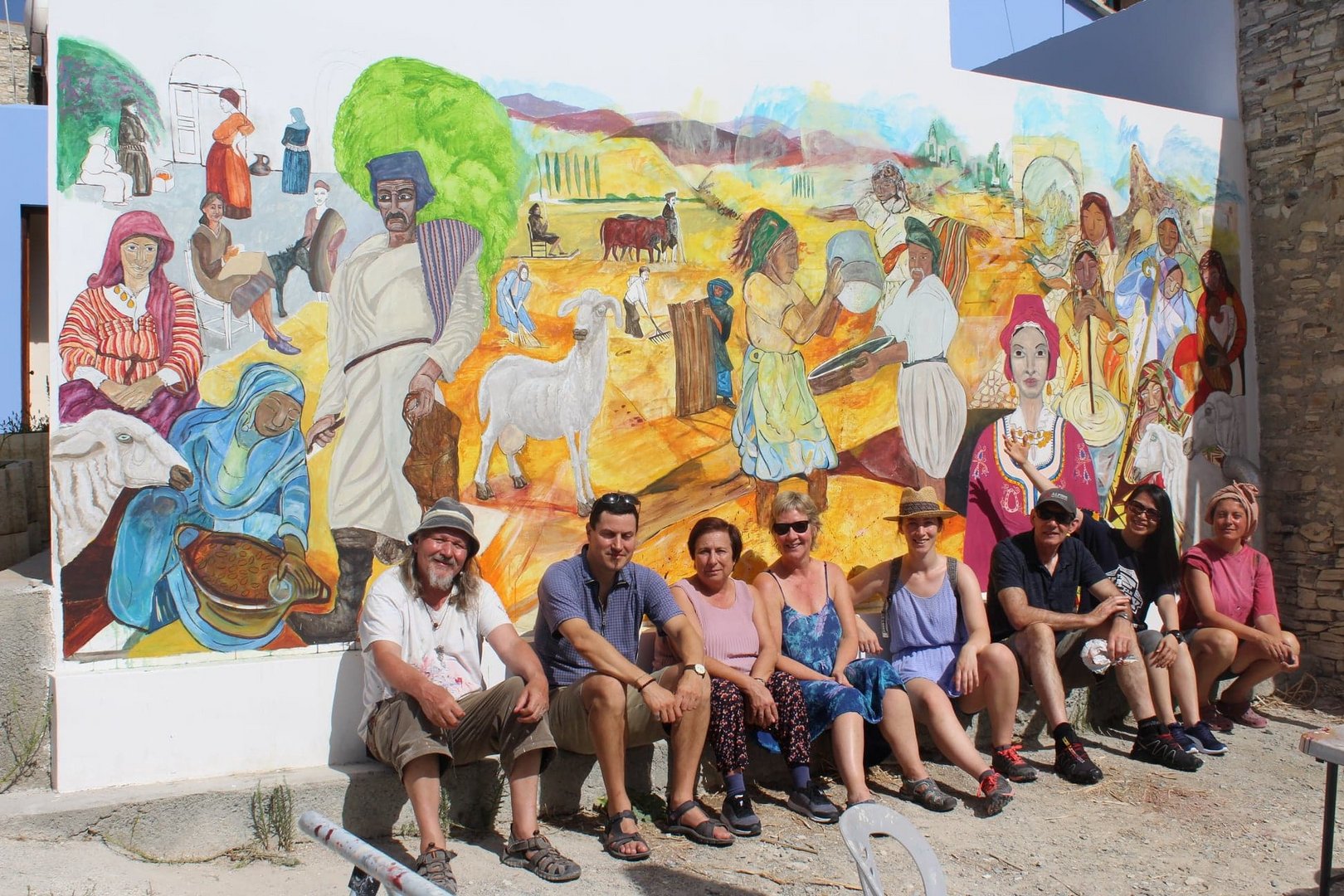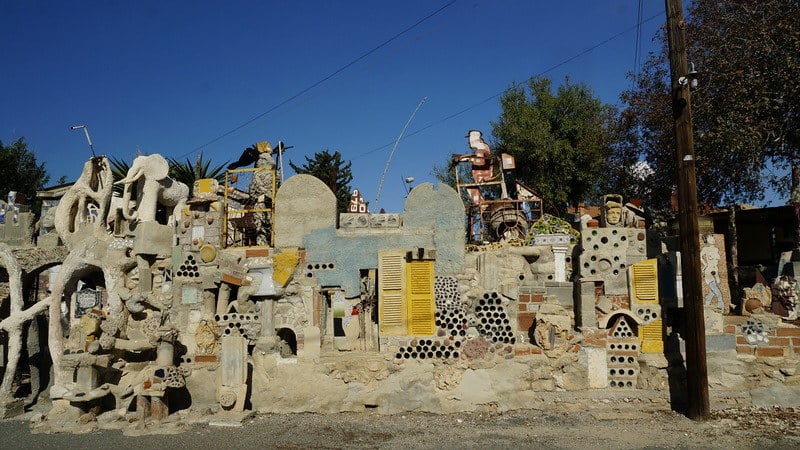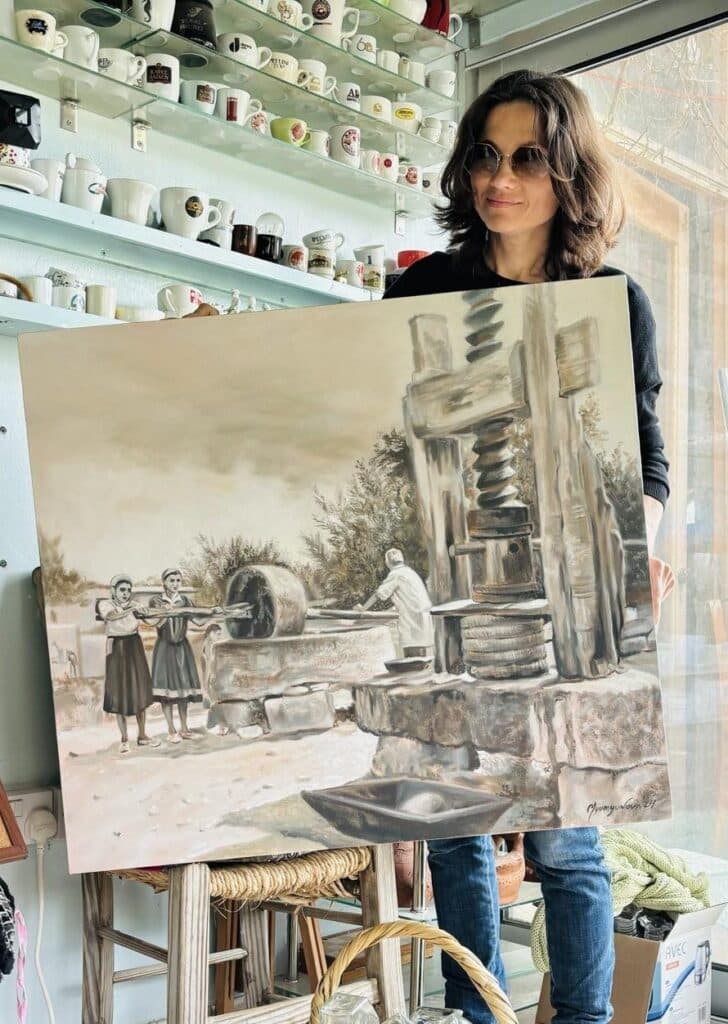By Martin Clark
When it comes to getting the message across about environmental damage and decline, we need to use every opportunity and method that we can. Visual art presents us with such an opportunity and Cyprus has some good examples to learn from.
The late, great Stass Paraskos (1933 to 2014) was perhaps Cyprus’ most famous and celebrated contemporary artist. I began working with him in 2002 and I still work with his daughter, Margaret Paraskos in Lempa near Paphos. Stass introduced me to the concept of turning waste into art, and thereby focusing the audience’s attention on just how wasteful humankind has become. Stass’ work is in the Tate Modern in London but, for me, his most enduring masterpiece is the ‘The Great Wall of Lempa’.
The sculptural wall is now officially part of the patrimony of Cyprus – and rightly so. It incorporates broken tiles, concrete sculptures, ceramic toilets, old bottles and oil drums, bicycles, advertising boards, scrap metal and discarded builders’ waste. The silhouetted figure of Stass on a bicycle cut from a Coca Cola hoarding is an enduring image.
Over these last 20+ years, we’ve supported with European mobility grants, over 700 students and teachers to work and learn at Lempa and the Limassol and Larnaca (now sadly closed) campuses of the Cyprus College of Art. It cannot be over-stated, just how influential the experience has been for me and our ongoing projects in Cyprus.
Part of Stass’ legacy are the artists that we have successfully grouped together in Pano Lefkara and Kato Drys over the last 10 or so years. They were all either students of or teachers with Stass and were certainly influenced by his art and cultural ideas. They were also influenced by his recycling of waste materials for the creation of art and ways to use art themes to give environmental messages.
They all act as teachers to those learners coming to Cyprus to study and learn about the island’s fantastic culture and nature. It’s a great example of innovative, informal and intergenerational teaching, and presents a powerful tool for environmental education.
Phil Bird and Anna Georghiou have completed five hard hitting murals which celebrate more sustainable times with local villagers ‘working with the grain of nature’ rather than kicking against it and even destroying the wonderful environmentally diverse cultural landscapes of Larnaca district’s mountainous area.
These can be seen in Pano Lefkara at the ‘Mola Cultural Factory’ (formerly the Old Olive Mill), Kyrenias street and Leoforos Georgiou Chatzicharalampous street. All have a focus on ‘localness’ and have an ‘anti-globalisation’ feel, featuring silversmiths, basket makers, mosaic artists, pleumistras (lace makers), shepherds, threshers, dhukanis, winnowers and children playing marbles in the streets (rather than being glued to a smartphone).
Aylin Myumyunova was a student of Stass and her early works are much influenced by his naive village style. Aylin currently works on old (and sustainable) village scenes, influenced by 100-year-old photographs. In Kato Drys, Aylin paints the ‘village saints’ on discarded wooden doors and more full figure saints can be seen in Pano Lefkara. As a project team we are always being given old doors and shutters by the local carpenters.
More than anybody else, Peter Bird has ‘grasped the environmental nettle’ through his wonderful art, which adorns the streets of Pano Lefkara and Kato Drys. Peter gathers old tabletops, metal shelving, old mannequins, lampshades, yogurt cartons and crockery to produce mini sculptures and contemporised textile patterns (so appropriate for the lace villagers).
He has an incredible fine line technique and a very sound grasp of balance, symmetry and graphic design. At the Mola Cultural Factory many of Peter’s works are displayed and on April 20 an exhibition of his accumulated works will go on show. Certainly, one aim of this exhibition is to turn people’s minds to the use of waste materials to give environmental messages…. just as Stass Paraskos did all those years ago.
Martin Clark (a professional forester and land manager) is director of Grampus Heritage & Training, the UK’s most successful EU wide vocational training organisation, with 28 years’ experience










Click here to change your cookie preferences